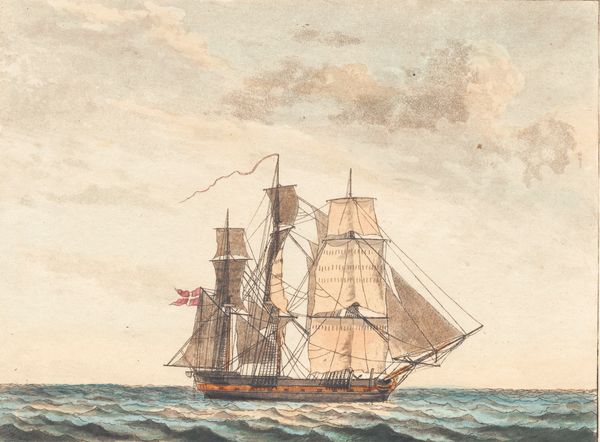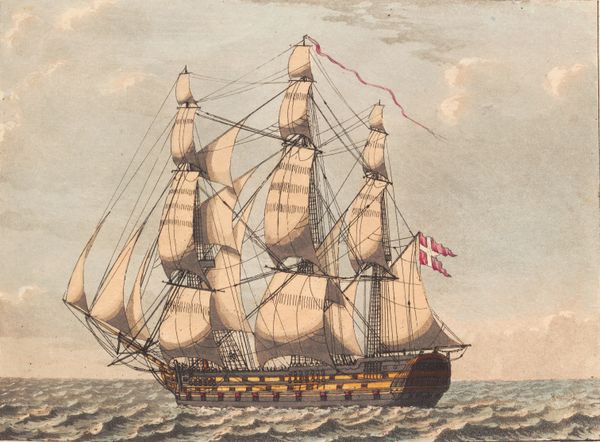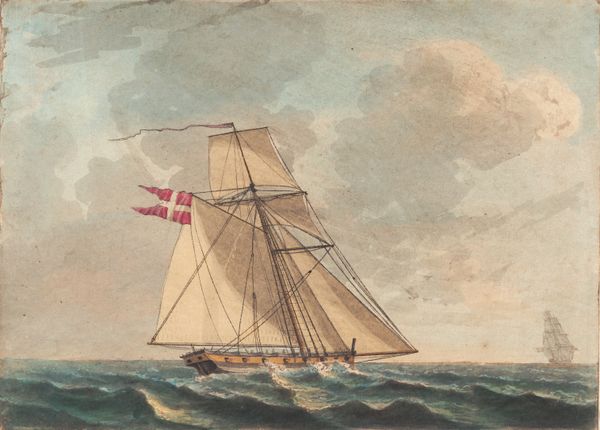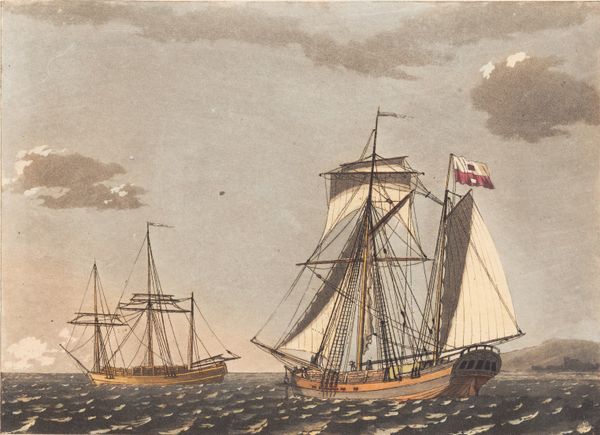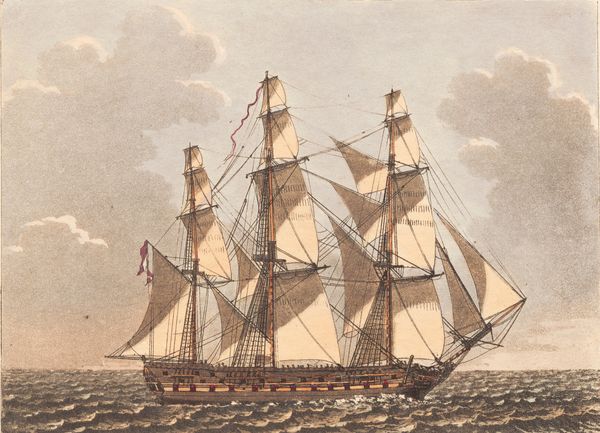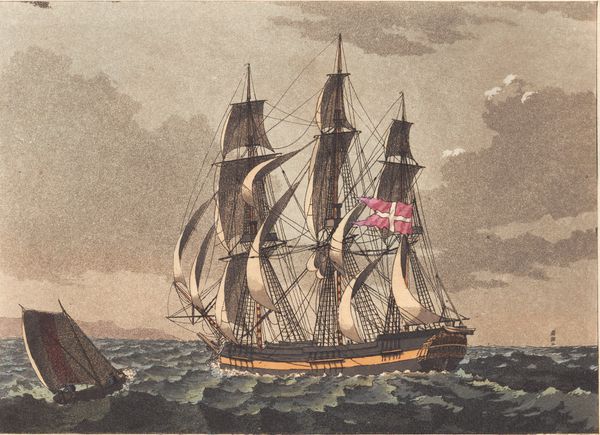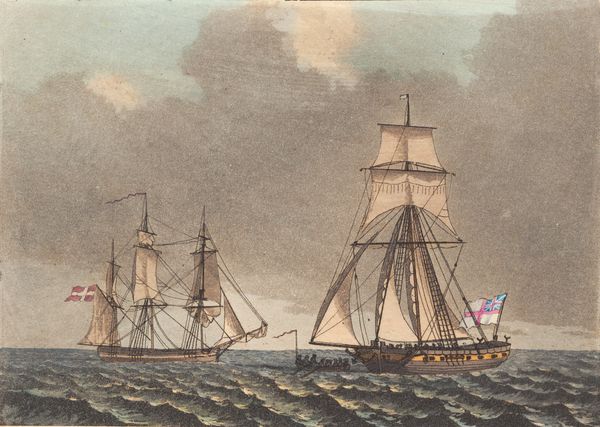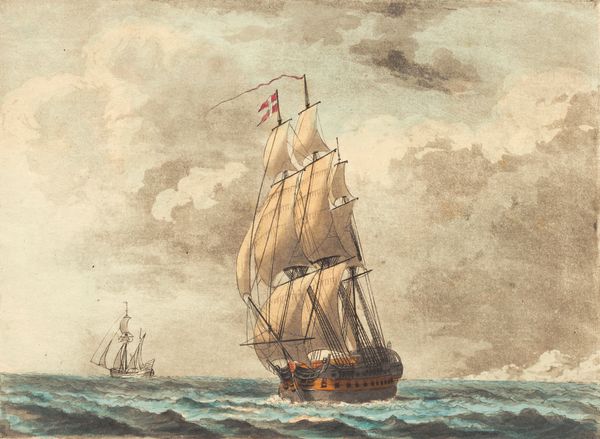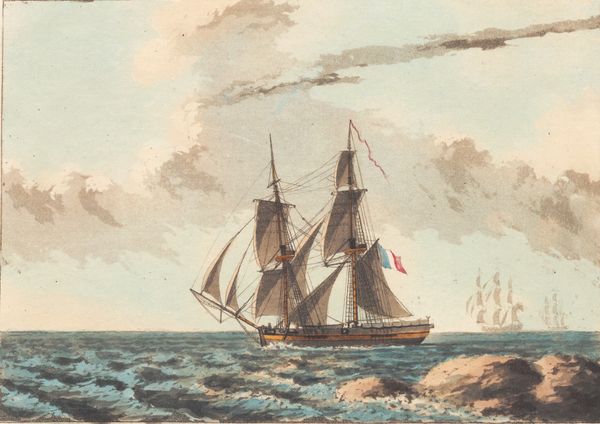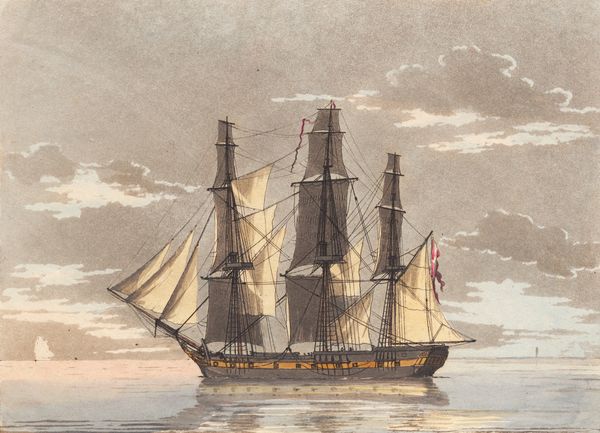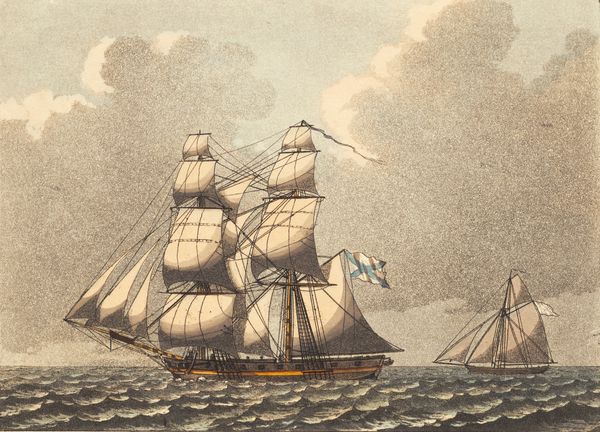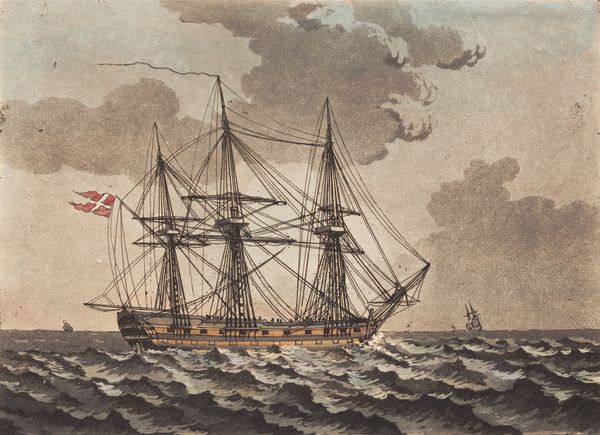
aquatint, drawing, print, watercolor
#
aquatint
#
drawing
# print
#
landscape
#
watercolor
#
coloured pencil
#
romanticism
#
watercolour illustration
Dimensions: 188 mm (height) x 235 mm (width) (bladmaal), 155 mm (height) x 210 mm (width) (plademaal), 133 mm (height) x 189 mm (width) (billedmaal)
Curator: Let's consider this captivating seascape, "En dansk galease, at see i læ, med sidevind," created around 1805 by Niels Truslew. It's an aquatint and watercolor on paper, currently housed at the SMK in Copenhagen. Editor: Oh, it has that quintessential romantic feel. It reminds me of being seasick on a ferry once...that pale light, the rolling waves, it really captures a certain mood, doesn't it? Curator: Absolutely. Romanticism often uses the sea as a metaphor for the sublime, the untamable power of nature. Here, though, there’s something more specific going on. Denmark was navigating tumultuous political waters at this time, allied with France but facing British naval dominance. The ship, gallantly bearing the Danish flag, becomes a symbol of national resilience and identity in the face of external pressures. Editor: The flag's got pride. But it is like it's fighting. A tiny ship versus the forces of the deep, or, I guess in this case, a giant Empire? Is that accurate? Curator: Precisely. Also, aquatint, the printing technique used, allowed for tonal variations creating atmosphere that enhanced emotional depth. Watercolors provided delicate coloration that softened an otherwise harsh narrative about a country at war. Truslew balances patriotism with the vulnerability experienced on the waves. Editor: Do you know what else strikes me? We call the work romantic, yet I’d never romanticise life at sea back then. Still, what I find myself connecting to is that quiet intensity; an unblinking acknowledgment that there is something majestic—and perilous—about just existing. A testament of sailing and an insight into Denmark. It seems as true now, as then. Curator: That’s insightful. I think understanding this work in its socio-political context really highlights these tensions. Editor: Exactly, the best way to explore the human condition sometimes takes wind, water and wood.
Comments
No comments
Be the first to comment and join the conversation on the ultimate creative platform.

